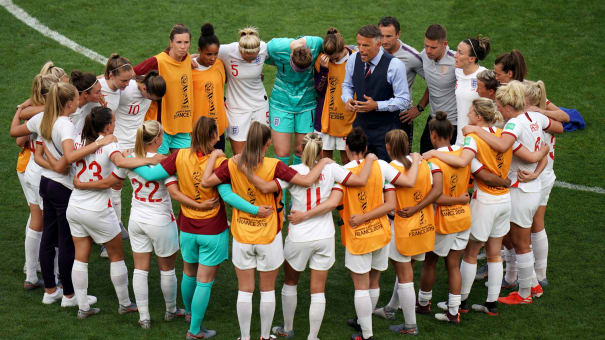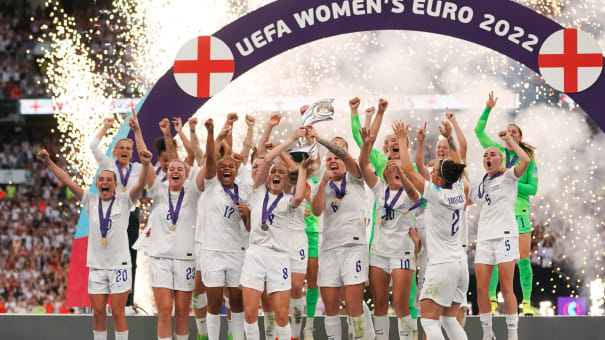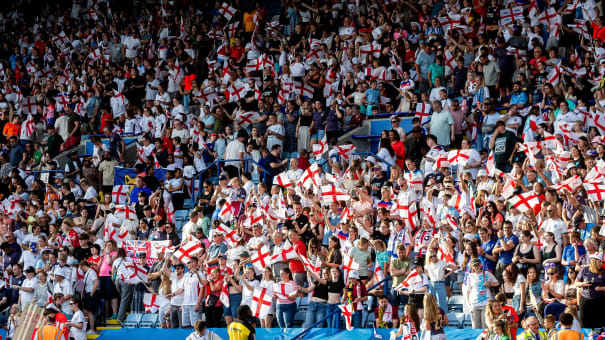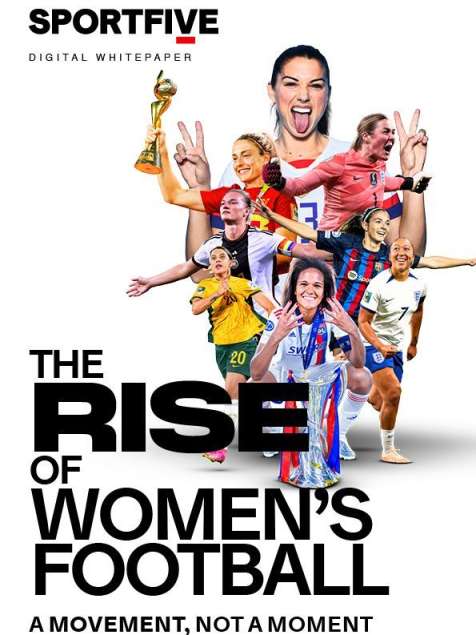
Levelling the Playing Field: How Media Coverage Fuels Participation in Women’s Football
Published on
by Izzy Fawcett
Participation and interest in women's football have boomed in recent years due to increased media coverage, with estimates suggesting this will only grow further after the UEFA Women’s EURO 2025.
In this article, we explore the impact of media coverage on the growth of women's football in the UK.
In this Insight:

The Power of Visibility
In recent years, the surge in media coverage surrounding women's football has played a transformative role in elevating the sport’s profile and popularity. What was once a niche, often overlooked area of the game has now captured global attention, inspiring millions of girls and women to see football not just as a pastime, but as a viable career pathway.
Major tournaments, specifically the UEFA Women’s Euros and the FIFA Women’s World Cup, have served as turning points in reshaping public perception and increasing visibility. Quite simply, without media presence, many aspiring young athletes would never know the opportunities that exist or feel represented in the sport they love.

The Struggle for Recognition: Lack of Media Coverage
Women’s football has a long, and often underappreciated, history. Its origins trace back to the late 19th century, with informal matches and grassroots teams forming in towns and cities across the UK and Europe. However, progress was stifled for decades by gender norms and institutional barriers.
In the UK, the Football Association’s (FA) ban on women’s football in 1921 effectively erased the sport from public view, citing questionable medical and moral concerns. This ban lasted until 1971, a full 50 years, and its effects were long-lasting, leading to most football-playing countries around the world employing similar bans on the women’s game.
Even after the ban was lifted, women’s football received minimal institutional support and even less media coverage. Sponsorships were scarce, match attendances were low, and televised coverage was virtually non-existent. The difference between the men’s and women’s games was immense, and the lack of exposure made it nearly impossible for the sport to grow.
It wasn’t until the 2019 Women’s World Cup that a significant shift began to take place, with matches broadcast globally and media outlets finally giving the tournament the attention it deserved. This tournament planted the seeds for a media-driven renaissance in women’s football.

Participation Skyrockets Post-EURO 2022
The 2022 UEFA European Women’s Championship was a game-changer. Hosted in England and broadcast nationally by ITV and the BBC, it broke viewership records and ignited public passion. The tournament attracted remarkable broadcasting numbers, with the BBC reporting that there was an average of 11 million viewers per match in the UK alone, and a global audience of more than 365 million - numbers rarely seen before in the women’s game.
This surge in visibility wasn’t just symbolic; it translated into real-world impact. The FA has reported a 56% increase in female participation in football across the UK in the past four years. This spike is largely credited to the success of UEFA Women’s EURO 2022 and the momentum it created, which carried into the 2023 FIFA Women’s World Cup. That tournament, also covered jointly by BBC and ITV with the same broadcasting format as the men’s competition, further normalised women’s football as a mainstream sport.
According to the FA, there are now over half a million additional opportunities for women and girls to play football compared to 2020, ranging from local grassroots teams and school clubs to national league pathways. The visibility of role models on TV - athletes who look like them, sound like them, and come from similar backgrounds - has played a vital role in shifting cultural perceptions and boosting participation.

Looking Ahead: EURO 2025 and the Future of the Game
The 2025 UEFA Women’s European Championship, which kicked off earlier this month, is poised to reach even greater heights. It’s projected to attract a global TV audience of over 500 million - an astonishing leap that reflects how far the sport has come in such a short time.
With increased investment, improved infrastructure, and a generation of young fans who’ve grown up watching women’s football on primetime television, the conditions are primed for another wave of growth. As more women and girls gain access to football, whether through school programs, local leagues, or elite development pathways, participation is expected to continue climbing.
The relationship between media coverage and participation is clear: when people see it, they believe it. And when they believe in it, they take part. As UEFA Women’s EURO 2025 continues to unfold, it stands not only as a showcase of talent and competitiveness but also as a beacon for what’s possible when women's sport is given the platform it deserves.

Your Next Read
Women's football is gaining popularity every day, and with the increased investment from broadcasters and sponsors, this growth will continue to inspire more girls and women to play the sport they love.
For more details about the rise of women's football and how investments have transformed the game, read our free whitepaper, The Rise of Women's Football: A Movement, Not a Moment.
Covering key areas within the women's game, including the role of media, fans, players and brands, the whitepaper seeks to underline the growth, change and opportunity in women's football unpacking its multi-faceted commercial landscape.